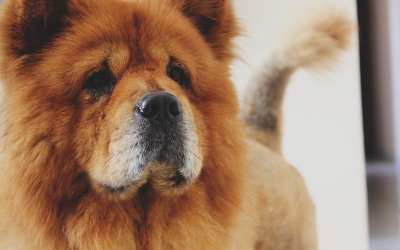
As temperatures soar across the Northeast again this week, we must remember to keep our pets safe from the heat. Currently, eight states are under heat advisories from Texas to Tennessee, and this weekend the heat will stretch into the Great Lakes region and the Northeast with temperatures in the high 90s. Combined with the humidity, it will feel closer to 100°F (38°C)!
To keep our pets safe, we must provide them with shade, keep a supply of fresh cool water, protect paws from hot asphalt and concrete, and never leave them unattended in the car. But what are the longer-term impacts of rising global temperatures? A recently published study examined the incidence and risk factors for heat-related illness in dogs in the United Kingdom.
The research identified that weight, age, breed, and skull shape were all risk factors for heat-related illness.
Dogs that were at or above the average adult bodyweight for their breed had an increased risk of heat-related illness. Interestingly, dogs weighing less than 22 lbs (10 kg) were found to have a lower risk than any dog weighing more than 10 kg. This is explained by heat transfer principles. Smaller dogs have a high heat storage to radiative surface area ratio, which results in more rapid heat loss as compared to larger dogs. This means they don’t overheat as quickly as larger dogs.
Older dogs (those greater than 12 years of age) had the greatest odds of heat-related illness. This corresponds to human health studies, which report that the elderly are at greater risk. Old age in humans is associated with heat-related illness due to the inability to dissipate heat due to changes in sweat production and decreased skin blood flow.
Brachycephalic breeds—those with shorter snouts, or flat-faced anatomy—are less heat tolerant. This includes breeds such as Cavalier King Charles Spaniel, Bulldog, and French Bulldog.
As extreme weather events—including extreme heat—are predicted to increase, it’s important to recognize the impacts of extreme heat, not only on human health, but animal health as well. The nine breeds of dogs identified as being at higher risk for heat-related illness were: Chow Chow, Bulldog, French Bulldog, Dogue de Bordeaux, Greyhound, Cavalier King Charles Spaniel, Pug, English Springer Spaniel and Golden Retriever.
It’s clear that some of the same risk factors for heat-related illness apply to both humans and dogs. Keeping your dog at a healthy weight for its breed is an important first step at reducing the risk. Knowing which breeds of dog have an increased risk of heat-related illness, allows you to implement strategies to reduce the risk if your dog falls into the high-risk group. Two ways to reduce the risk are to decrease the amount of time your dog spends outside during hot weather and eliminate walks and exercise during the hottest times of the day. Treat your senior pet the same way you’d treat your elderly grandparents on a hot summer day, by providing cool drinks and a cool place to rest.